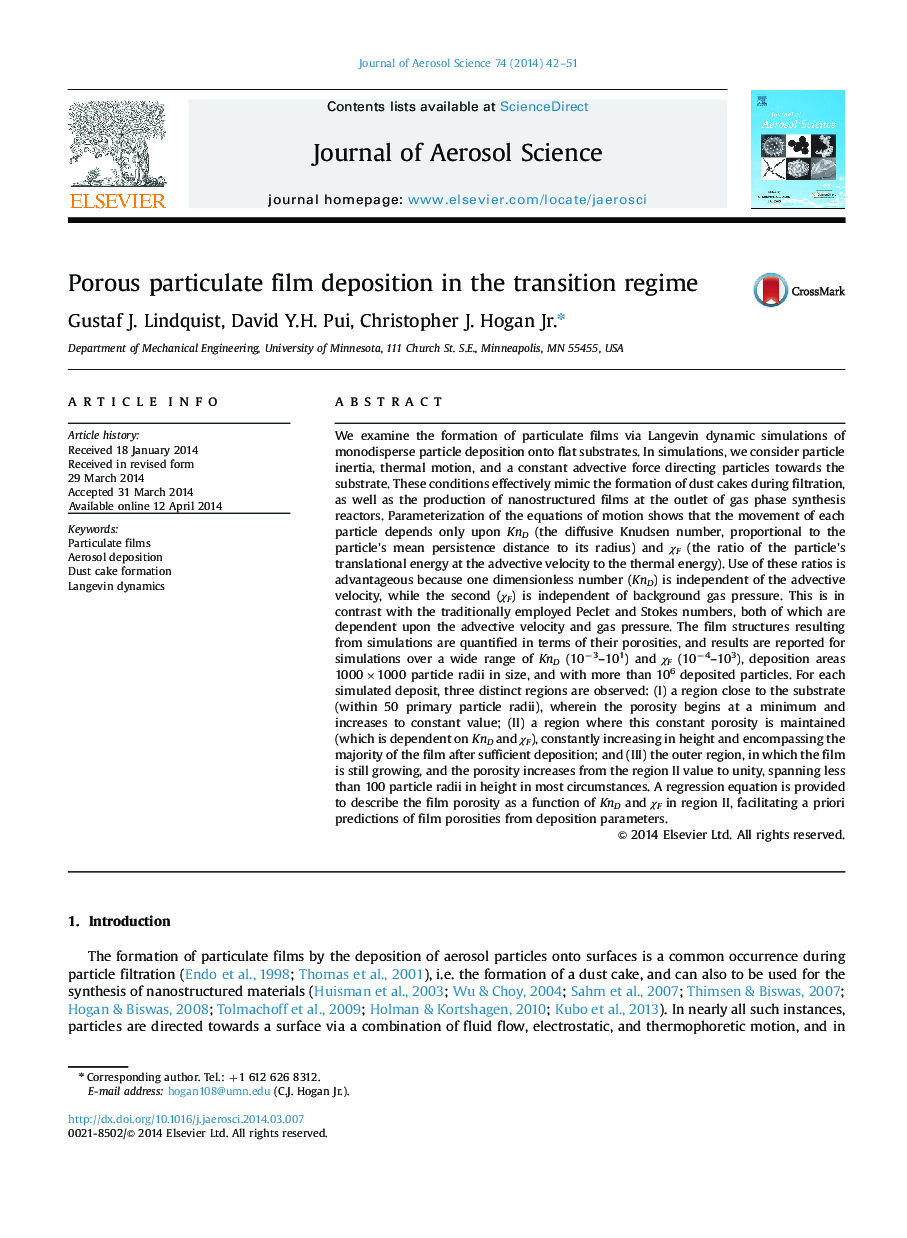| Article ID | Journal | Published Year | Pages | File Type |
|---|---|---|---|---|
| 4452339 | Journal of Aerosol Science | 2014 | 10 Pages |
•We examine the deposition of particles to form porous films by Langevin simulations.•The porosity of the deposited films is calculated as a function of film height.•All films are found to have a region of constant porosity.•This constant porosity is dependent on two dimensionless ratios.
We examine the formation of particulate films via Langevin dynamic simulations of monodisperse particle deposition onto flat substrates. In simulations, we consider particle inertia, thermal motion, and a constant advective force directing particles towards the substrate. These conditions effectively mimic the formation of dust cakes during filtration, as well as the production of nanostructured films at the outlet of gas phase synthesis reactors. Parameterization of the equations of motion shows that the movement of each particle depends only upon KnD (the diffusive Knudsen number, proportional to the particle׳s mean persistence distance to its radius) and χF (the ratio of the particle׳s translational energy at the advective velocity to the thermal energy). Use of these ratios is advantageous because one dimensionless number (KnD) is independent of the advective velocity, while the second (χF) is independent of background gas pressure. This is in contrast with the traditionally employed Peclet and Stokes numbers, both of which are dependent upon the advective velocity and gas pressure. The film structures resulting from simulations are quantified in terms of their porosities, and results are reported for simulations over a wide range of KnD (10−3–101) and χF (10−4–103), deposition areas 1000×1000 particle radii in size, and with more than 106 deposited particles. For each simulated deposit, three distinct regions are observed: (I) a region close to the substrate (within 50 primary particle radii), wherein the porosity begins at a minimum and increases to constant value; (II) a region where this constant porosity is maintained (which is dependent on KnD and χF), constantly increasing in height and encompassing the majority of the film after sufficient deposition; and (III) the outer region, in which the film is still growing, and the porosity increases from the region II value to unity, spanning less than 100 particle radii in height in most circumstances. A regression equation is provided to describe the film porosity as a function of KnD and χF in region II, facilitating a priori predictions of film porosities from deposition parameters.
